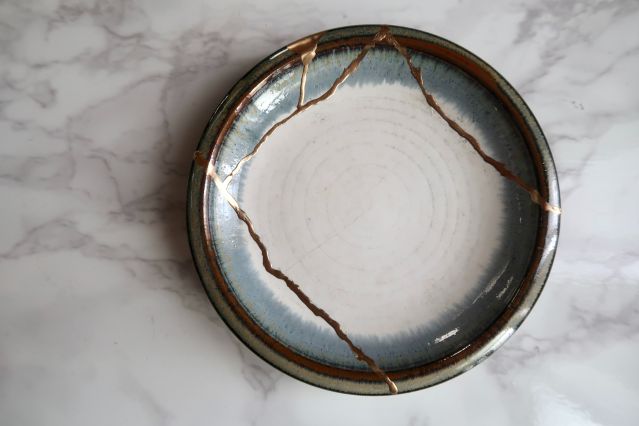Forgiveness
What If You Gave Yourself the Apology You Deserve?
What we get wrong about forgiveness.
Posted June 6, 2023 Reviewed by Abigail Fagan
Key points
- The concept of forgiveness has multiple definitions. It can be bilateral, unilateral, or within self.
- The definition of forgiveness we subscribe to directs our experience after trauma.
- The empowered path to healing rests inside owning and directing our own forgiveness process.

Forgiveness is both the hairy beast in the far corner of the heavily wooded forest, foreboding but not seen, and an angel’s offering, wrapped in soft tissue, created by you.
What Does It Mean to Forgive?
The differences in interpretations are dependent on what definition of forgiveness you subscribe to, if, in fact, you subscribe to any definition at all.
There is the traditional Judeo-Christian model of giving grace to the offender, a type of forgiveness directed outside in order to heal your insides (Fow, 1996). Such ideas sleep beside the sentiment “that in order to be whole, healed, or good and deserving people, we must forgive our perpetrators” (Gildea, 2021, p. 81). Such forgiveness may be bilateral, in which the offender acknowledges the harm done, or unilateral, where you offer forgiveness despite the absence of an apology, be it due to an unwillingness or an impossibility, as is the case when the wrongdoing was enacted by a large group of people or the wrongdoer is unreachable or has died (Govier, 2002).
Forgiveness in these spaces most often refers to relinquishing all ill will held against the perpetrator(s), though not necessarily condoning or absolving the behavior. However, regardless of the nuances between definitions and interpretations, there remains a steady focus on the person or group who inflicted the harm (Tene & Eisikovits,2017).
What if You Are Asking the Wrong Questions About Forgiveness?
But what if you've got it all wrong, and healing is an inside job? What if the person you need to forgive is actually yourself? What if eternal grace rests inside, absolving your shame and despair that is fed daily by the poisonous narratives, set on constant repeat, about all of the moments you didn’t speak up, push back, or run when we were under attack (Gildea, 2021)?
What if this promise of a brighter tomorrow, where despair’s dark curtains are banished so the light can shine in, is dependent on the reckoning that inside the turmoil, you fought with the best weapons available to you at the time? What if you decided it is nonsensical to hold yourself accountable for the bad behaviors of those who are unremorseful for the carnage they inflicted on lives that meant so little to them?
What if you are both the redeemer and the redemption? Such acknowledgment would free you from the chair in which you sit, awaiting an apology that is unlikely forthcoming. What if instead, you took back the pen that was stolen from you, ready to repossess your life’s narratives—past, present, and future? What would this new empowered path look like, and how do you navigate the difficult terrain?
How Do You Take the Empowered Path to Forgiveness?
- Begin with self-discovery, as Emily Dickinson aptly recounts, “I have been out with a lantern searching for myself.” This revelatory unearthing allows you to find the pieces of you that were cut away by the people who whittled you down to the smallest version of yourself, counting on you disappearing (Kleon, 2015).
- Now, spread those pieces atop the workbench and study their complexity and grandeur, allowing yourself to grieve the smoothness of your past life before the dissembling.
- Next, acknowledge that though pieces of you have broken off, you are not broken. On the contrary, you still possess the infinite parts of who you are. The abuse simply buried them. But now, they present themselves again to you, a reintroduction to your former self.
- Take this time to examine the jagged edges staring back at you and decide what pieces you want to smooth down and reposition into your story, and what parts you can graciously thank for their service and release (Gildea, 2021).
- For those pieces you deem essential, practice a type of Kintsugi, the traditional Japanese art form of using gold fleck lacquer to paste broken pottery back together again. This intricate process accentuates the cracks and celebrates the mess. It is an outward acknowledgment of how the struggle made you stronger, more complex, and more beautiful (Kumai, 2018).
- Examine your reconfiguration in the mirror, new but not novel, for your original essence still radiates from the reflection.
- To help solidify your new shape, take your lantern back into the forest and help others locate their own lost pieces, recognizing that healing is both an inside job of interrogation and release, and an outside offering to others who, too, have been wounded (Suskind, 2023).
- Lastly, marvel at how you created a new life whose reinvention was not at all dependent on the acknowledgment or support of those who attempted to break and possess you. For one can never truly own something that doesn’t belong to them. You have always fully belonged to yourself. You direct your evolution.
Forgiveness is not a noun, signifying a passive exchange between the offended and the offender. Forgiveness is a verb in which you decide to take what happened to you, bruises on the soul, and integrate, not erase, the harm into a new version of yourself. Forgiveness, like all integrations, does not wipe away or replace the original version. Instead, it embraces this new form necessary for surviving and thriving in life’s next iteration.
Perhaps Rabbi Kushner (1981) put it best in his seminal text, Why Bad Things Happen to Good People, “In the final analysis, the question of why bad things happen to good people translates itself into some very different questions, no longer asking why something happened, but asking how we will respond, what we intend to do now that it has happened (p.110).”
References
Fow, N. R. (1996). The phenomenology of forgiveness and reconciliation. Journal of
Phenomenological Psychology, 27(2), 219. doi:10.1163/156916296X00113
Gildea, I. J.. (2021). The poetry of forgiveness: Poetic inquiry, forgiveness and autoethnography in the context of childhood sexual abuse (csa) recovery. Journal of Spirituality in Mental Health, 23(1), 77–97. https://doi.org/10.1080/19349637.2020.1729290
Govier, T. (2002). Forgiveness and revenge. Routledge. https://doi.org/10.4324/9780203870136
Kleon, A. (2015, Nov. 15). ‘I am out with lanterns, looking for myself.’ Austin Kleon. tumblr.austinkleon.com/post/133207289146.
Kumai, C. (2018). Kintsugi wellness: The Japanese art of nourishing mind, body, and soul.HarperCollins.
Kushner, H. S. (1981). When bad things happen to good people. Schocken Books.
Suskind, D. (2023). Workplace bullying: Finding your way to big tent belonging. Rowman and Littlefield.
Tener, D., & Eisikovits, Z. (2017). Torn: Social expectations concerning forgiveness among
women who have experienced intrafamilial child sexual abuse. Journal of Interpersonal
Violence, 32(16), 2496–2514. doi:10.1177/0886260515593296


